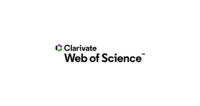PRENATAL AND POSTNATAL DEVELOPMENT AND COMPARATIVE ANATOMY OF THE MANDIBLE OF THREE BREEDS OF SHEEP: A GROSS STUDY
DOI:
https://doi.org/10.5380/avs.v27i2.84187Palavras-chave:
Mandible, Foramina, Uda, Balami, YankasaResumo
This study aims to evaluate and compare the development of the mandible and gross anatomy in three breeds of sheep. A total of 180 and 720 prenatal and postnatal samples were used respectively, their skulls were macerated and mandibles detached. In prenatal life, the mental and mandibular foramina were rudimentary in the late 1st trimester and 2nd trimester and developed in the 3rd trimester. The alveolus and mandibular canal differentiated in the 3rd trimesters respectively. In the postnatal life, the ventral border was convexed in Uda but flat in Balami and Yankasa breeds. The angular part of the ramus was thin in Uda and thick in Balami and Yankasa. The mandibular tuberosity was absent in Balami and Yankasa but present in Uda. There was a small accessory foramen caudal to the mental foramen just below the first premolar teeth in the Uda and Yankasa. The labial surface was wide and rough in Balami and Uda but smooth in Yankasa. The medial surface was flat in the young postnatal and convexed in the adult postnatal. It was brought to a conclusion that the mandible in the Nigerian breeds undergoes various morphological changes from prenatal and postnatal ages with peculiar differentiating features.
Downloads
Publicado
Como Citar
Edição
Seção
Licença
Autores que publicam nesta revista concordam com os seguintes termos:
- Autores mantém os direitos autorais e concedem à revista o direito de primeira publicação, com o trabalho simultaneamente licenciado sob a Creative Commons - Atribuição 4.0 Internacional que permite o compartilhamento do trabalho com reconhecimento da autoria e publicação inicial nesta revista.
- Autores têm autorização para assumir contratos adicionais separadamente, para distribuição não-exclusiva da versão do trabalho publicada nesta revista (ex.: publicar em repositório institucional ou como capítulo de livro), com reconhecimento de autoria e publicação inicial nesta revista.
- Autores têm permissão e são estimulados a publicar e distribuir seu trabalho online (ex.: em repositórios institucionais ou na sua página pessoal) a qualquer ponto antes ou durante o processo editorial, já que isso pode gerar alterações produtivas, bem como aumentar o impacto e a citação do trabalho publicado.













